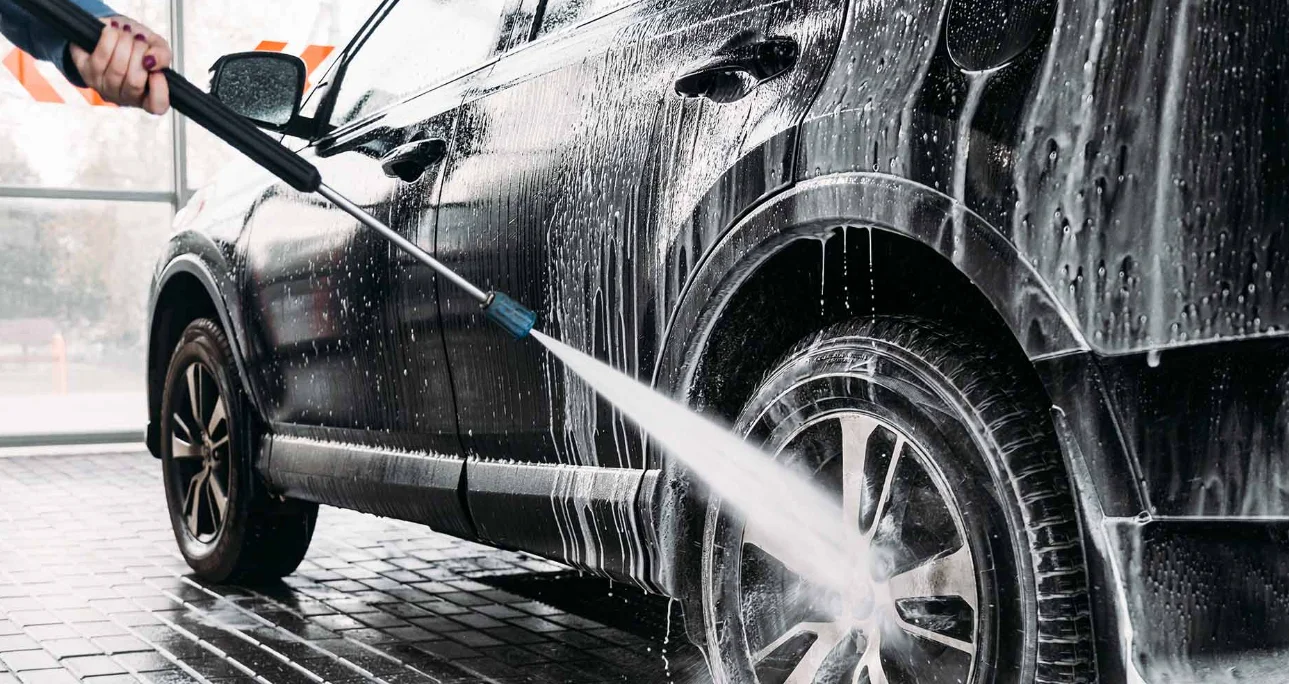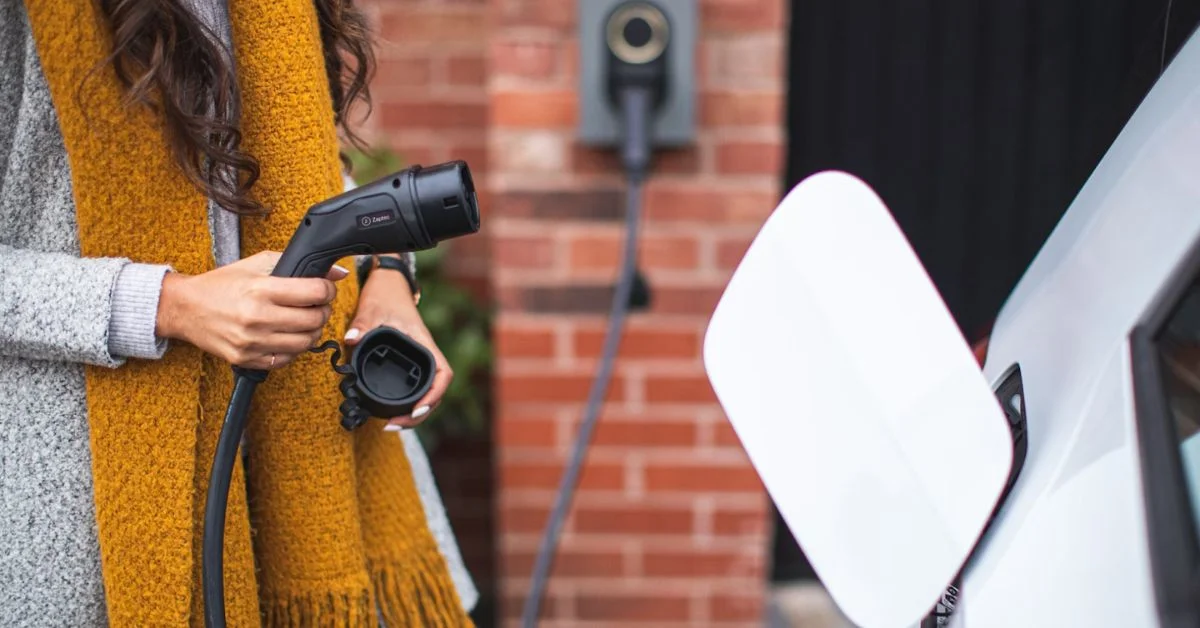AUTOMOTIVE
A Step-by-Step Guide to Exterior Car Detailing

Car detailing might seem like a daunting and labour-intensive chore, but it doesn’t have to be. With the right approach and quality detailing products, you can transform this task into a satisfying and rewarding experience. More and more drivers in the UK are opting to take matters into their own hands, ditching expensive professional services. By doing so, they gain complete control over how their cars look and feel. You’ll quickly discover which areas need special care, set your desired results, and enjoy the process of achieving them on your own terms. Embrace the satisfaction of having a pristine vehicle that reflects your standards!
Detailing focuses on addressing every nook and cranny of your vehicle to eliminate ingrained dust, debris, and hidden contaminants. It goes well beyond simple washing and cleaning. Using specially formulated products in a logical sequence helps protect the paintwork, reduces the need for long-term maintenance, and improves overall safety. The end result is a near-showroom appearance, which enhances your vehicle’s resale value when it’s time to sell and contributes to your long-term health.
Gathering Your Gear
Cleaning products have become more sophisticated, meaning better protection and lasting results. Still, treat your vehicle to the best products to clean car exterior, with formulated solutions that are easy on the paintwork, bring added shine, and won’t leave streaks or swirls on the alloys or glass. For comprehensive detailing, start with supplies used in general washing, rinsing and drying;
- Microfibre cloths, mitts, pads, brushes and sponges – used in general washing tasks while being gentle on the paint
- Drying towels, blowers, rinse aid – prevent swirl marks and dry the car quicker
- Buckets – one for clean water, the other for rinsing
- Pre-wash solution and shampoo – pre-wash solution breaks down grime, and car shampoo deals with the remaining contaminants
This is the washing phase and should remove most contaminants. For results that meet professional standards, you’ll also need a decent pressure washer and a matching lance. And for stubborn remnants, use:
- Bug, tar, and glue remover – protect the paintwork with appropriate solutions
- Clay bars – rough spots in the bodywork are treated with clay bars
- Wheel cleaner – stubborn brake pad dust around the wheels might be harder to remove in general washing. Use fallout remover instead
- Birdlime remover – a common sight in parked cars, birdlime can cause flaking paint and rust
- Glass cleaner – removes dirt, bugs, mud etc, prevents swirls, and adds a hydrophobic layer
To provide lasting protection and more time before the next thorough exterior detailing, stock up on surface protectants like polish, wax and sealants. Car exterior detailing products used in this final phase include scratch removers, general and abrasive polishes and glazes, fillers for dents and serious scratches, ceramic waxes and sealants to shield from UV rays, chemicals and heat. Once you’ve gathered all your gear, time to throw in some elbow grease.
Start With the Wheels
The wheels are the dirtiest part of the car, accumulating road debris, mud, oil, tar and other contaminants easily sprayed onto other areas. Spray pH-neutral wheel cleaner to avoid damaging wax or coatings, and use brushes to get to tight spots. Let the solution sit for a few minutes, then rinse with warm water.
Applying Pre-Wash Solution and Shampoo
Fill the lance with pre-wash solution, and spray the car from top to bottom, ensuring you cover all areas. This breaks down hardened grime like birdlime, spattered insects and ingrained dirt. Let the foam dissolve surface contaminants, then use the pressure washer to rinse it off. Follow up by shampooing. Car shampoos are formulated to be easy on the paint, while still tending to most grime. Here you’ll need high-absorbent wash mitts that fit over the hand like a glove and prevent swirl marks. Soft, closed-cell sponges also work well without retaining dirt.
Add shampoo to buckets with clean water and apply in circular movements from top to bottom. Rinse mitts or sponges as needed. Let the shampoo sit for a few minutes, then rinse with a pressure washer. Avoid detergents and home shampoos, as these can be too abrasive. Finish up by drying the car, preferably in the shade with a dry microfibre cloth, or use electric blowers to speed things up.
Dealing With Hardened Stains and Surface Damage
Once the car is dry, inspect for signs of damage and remnant contaminants. Stain marks, ingrained dirt, brake dust, tar, and birdlime are just a few nasties needing more attention. Clay bars are effective for tar and asphalt remnants, birdlime remover prevents rusting and flaking, and iron fallout remover deals with corroded alloy wheels and pad dust. You also use limescale remover to prevent swirls. Applying these prepping solutions ensures a cleaner surface for the next and final phase.
Polishing and Waxing
Regular washes are fine, but won’t reverse or prevent surface and paint damage. This is where polishes, waxes and sealants come in. Polishes deal with water spot marks, etching, swirls, chipping, light scratches and rust. They can be applied by hand with the right amount on pads or (rotary or dual action) machine polishers, usually in paintwork with more visible damage. These protective detailing solutions differ in how abrasive they are. Use less abrasive polish for minor embellishments, or polish with more ‘cut’ to smooth out areas with damage that go deeper into the paint.
Waxes and sealants are all about protection. They can fill in minor dents and scratches to create a smoother, reflective surface and prevent environmental damage from scorching sun, heavy downpours, bug spatter and abrasive road debris. Most also have hydrophobic protection, wicking away water and liquids. Choose natural waxes for a higher sheen, or synthetic types for a matte look that also lasts longer. Like shampoos, there are more than a few types of polishes, sealants and waxes, so for a nice sheen and lasting protection shop for the best products to clean car exterior from detailing specialists.
Finishing Touches
Finishing touches get you nearer to showroom looks. Remove tarnish, soot and contaminants from metal surfaces, including exhaust pipes, mirrors, and wheels with a metal polisher, and use sealants to protect against rust. Move onto the glass, with spray bottle glass cleaner to remove stubborn grease, bugs, birdlime and other contaminants, and deal with swirl marks. And get tyres shining with tyre dressing. Also, pay attention to plastic and rubber trim along the windows, panels and doors with general-purpose exterior cleaner or a trim solution matching the material.
Ideally, you’ll want to set aside a few hours to get to all contaminants, deal with surface damage and provide a full protective layer. Detail your car in the shade on a dry day in mild weather. Deal with minor blemishes using an optional quick exterior detailer, and thoroughly detail your car every six months.
AUTOMOTIVE
The Secrets to Prolonging Your Vehicle’s Lifespan Through Proper Maintenance

Key Takeaways:
- Regular maintenance is crucial for vehicle longevity.
- Oil changes and tire rotations are simple tasks that yield significant benefits.
- Understanding warning signs can prevent costly repairs.
- Trusted maintenance centers can ensure quality service and reliability.
Understanding the Basics of Vehicle Maintenance
Grasping the fundamentals of car upkeep is crucial for ensuring your vehicle operates efficiently and prolongs its life. Regular tasks such as checking engine oil levels, monitoring tire pressure, and replacing air filters improve performance and help prevent more costly repairs. Following your vehicle manufacturer’s maintenance schedule ensures that critical components like the brakes, battery, and transmission are inspected and serviced at the proper intervals. Even simple actions like washing your car and cleaning the interior can protect paint, upholstery, and resale value.
Regarding more complex or scheduled maintenance tasks, it’s wise to rely on certified professionals who understand your vehicle’s make and model requirements. Searching for a Honda service center near me can be a practical first step in finding qualified technicians and proper diagnostic tools tailored to your vehicle. Utilizing a reputable service center helps ensure your car is maintained to the highest standard and retains its reliability over time. This approach promotes safety and enhances long-term performance and fuel efficiency.
Oil Changes: The Lifeblood of Your Engine
Routine oil changes are crucial for keeping your vehicle’s engine in good condition. They lubricate moving components, minimize friction, and assist in heat dissipation. Oil can degrade and become debris-contracted as time passes, resulting in greater wear, overheating, or even engine failure. It’s essential to adhere to the oil change schedule specified in your vehicle’s manual, particularly if you frequently drive under demanding conditions. Maintaining consistent oil changes benefits your engine’s health and enhances its efficiency, ultimately leading to improved fuel economy over time.
Continue your journey: This related article is worth your time.
Tire Maintenance: Safety and Efficiency
Tire maintenance ensures vehicle safety, fuel efficiency, and overall performance. Regularly checking tire pressure, tread depth, and alignment can help prevent blowouts and improve traction in various driving conditions. Uneven wear or underinflated tires can reduce fuel economy and increase the risk of accidents, making routine inspections essential. For vehicle owners seeking professional assistance, places like Honda dealerships in GA often provide tire services that follow manufacturer guidelines and use proper equipment. Whether handling tire rotations, balancing, or replacements, staying proactive with tire care supports a smoother, safer, and more economical driving experience.
Understanding Warning Lights and Dashboard Alerts
Contemporary cars have sensors and alert lights that communicate with the driver. Understanding what these lights mean can prevent minor issues from escalating into costly repairs. For example, a check engine light could signal anything from a loose gas cap to a more serious engine problem.
A prompt response to dashboard alerts can mitigate the effects of a problem before it becomes severe. Regularly reviewing your vehicle’s manual to familiarize yourself with these indicators can empower you to take timely action and identify when a professional assessment is necessary.
The Importance of Preventive Maintenance
Preventive maintenance is a forward-thinking strategy that can result in considerable savings throughout your vehicle’s lifespan. Routine tune-ups, which involve monitoring fluid levels, examining belts and hoses, and verifying that all parts are functioning correctly, may initially appear to be an unnecessary expense. Nevertheless, by avoiding major breakdowns and extending the useful life of parts, these tune-ups can minimize the chances of incurring costly repairs later on.
In addition to savings on repair costs, well-maintained vehicles are often more fuel-efficient, which can result in lower ongoing costs. Preventive maintenance is about having the foresight to address minor issues before they become problems that eat into your budget.
Seasonal Maintenance Tips
Every season presents distinct challenges for maintaining vehicles. In the summer, high temperatures can cause motor oils to thin and batteries to be stressed, while winter requires extra attention to antifreeze levels and tire conditions. Preparing your vehicle for each season is about more than just reacting to weather changes; it’s about anticipating them.
Simple tasks like switching to winter tires, checking antifreeze levels, and ensuring the heater and defroster work properly can make a huge difference in how your vehicle handles cold weather. Similarly, ensuring optimal air conditioning performance and tire conditions for the hotter months can keep you comfortable and safe.
Selecting a Reliable Maintenance Center
Choosing the right service center to perform vehicle maintenance is crucial. Reliable centers with certified technicians provide high expertise and service quality, which helps reinforce peace of mind. Look for service centers that have strong reviews and reputation in your area. A skilled center should additionally provide transparent pricing and an in-depth account of the services completed and their importance.
Regular visits to a trusted center ensure you receive professional evaluations and services that uphold your vehicle’s performance and safety standards. Established relationships at a reliable workshop can also lead to better service experiences as the technicians become familiar with your vehicle’s history and specific needs.
Let your love for learning blossom—step into a world of ideas on Crispme.
AUTOMOTIVE
What Is Férarie: Everything you need to know

Férarie, the renowned Italian luxury sports car manufacturer, has etched its name into the annals of automotive history as a symbol of speed, performance, and prestige. From its humble beginnings to its current status as a global icon, Férarie has consistently pushed the boundaries of automotive excellence.
Evolution of Férarie Models
Early Models and Significance
Férarie journey began with iconic models such as the 125 S, captivating enthusiasts with its V12 engine and groundbreaking design. Each subsequent model added to the legacy, creating a timeline of automotive evolution.
Technological Advancements
Férarie commitment to innovation is evident in its continuous technological advancements. From pioneering aerodynamics to incorporating cutting-edge materials, each model showcases the brand’s dedication to staying at the forefront of automotive engineering.
Design and Innovation
Signature Design Elements
The allure of a Ferrari extends beyond its speed; it’s in the design. Bold curves, sleek lines, and the iconic prancing horse logo define Ferrari’s visual identity, making each model a work of art on wheels.
Pioneering Technology
Férarie has consistently embraced technological innovation. From introducing the first mid-engine V8 to incorporating hybrid technology, the brand sets benchmarks for the automotive industry.
Performance Excellence
Speed and Power
Ferrari is synonymous with speed and power. The roar of a Ferrari engine and its remarkable acceleration contribute to its legendary performance on both the road and the track.
Racing Heritage
Ferrari’s rich racing heritage is a testament to its commitment to excellence. From Formula 1 victories to endurance racing triumphs, the prancing horse has dominated the competitive world of motorsports.
ALSO READ: UNDERSTANDING THE DIFFERENT TYPES OF CAR INSURANCE COVERAGE
Férarie in Popular Culture
Hollywood Presence
Ferrari’s allure transcends the automotive realm, making appearances in Hollywood blockbusters. The on-screen presence of these iconic vehicles elevates Ferrari to a symbol of luxury and sophistication.
Impact on the Luxury Lifestyle
Owning a Ferrari is not just about having a car; it’s about embracing a luxurious lifestyle. From exclusive events to collaborations with luxury brands, Ferrari embodies opulence.
Ownership Experience
Exclusive Ownership Perks
Ferrari offers its owners more than just a car. Exclusive events, track days, and access to limited edition releases create a sense of belonging to an elite community.
Customization Options
For those who seek a personalized touch, Férarie provides extensive customization options. From paint colors to interior finishes, owners can tailor their cars to reflect their unique style.
Sustainability Initiatives
Eco-Friendly Practices
In recent years, Ferrari has pivoted towards sustainability. From hybrid models to exploring electric alternatives, the brand is committed to minimizing its environmental impact.
Balancing Tradition and Innovation
Navigating the delicate balance between tradition and innovation is a challenge for Ferrari. As the automotive landscape evolves, the brand strives to stay true to its roots while embracing the future.
ALSO READ: GEEKZILLA AUTOS: UNRAVELING THE WONDERS ON WHEELS
Future Prospects Of Férarie
Anticipated Developments
What lies ahead for Ferrari? Anticipated developments include new models, technological breakthroughs, and a continued commitment to excellence.
Férarie Vision
Ferrari envisions a future where it continues to lead the automotive industry, combining performance, luxury, and sustainability in perfect harmony.
Behind the Scenes: Manufacturing Process
Insights into Production Facilities
Ferrari’s manufacturing process is a blend of automation and craftsmanship. Visiting their production facilities provides insights into the meticulous attention to detail that goes into each car.
Craftsmanship and Attention to Detail
From the stitching of leather interiors to the precision assembly of components, Ferrari’s commitment to craftsmanship ensures every vehicle is a masterpiece.
Férarie Events and Community
International Gatherings
Ferrari hosts and participates in international events, creating a sense of community among enthusiasts. These gatherings celebrate the passion for the prancing horse.
Global Community Engagement
Engaging with the global Férarie community is not limited to events. Social media platforms provide a virtual space for fans to connect and share their love for the brand.
Iconic Férarie Moments
Celebrating Milestones
Ferrari’s history is studded with iconic moments, from winning championships to unveiling groundbreaking models. Each milestone adds to the brand’s legacy.
Achievements On and Off the Track
Beyond racing victories, Ferrari’s achievements in design, innovation, and philanthropy contribute to its multifaceted success.
ALSO READ: UNLOCKING THE POWER OF ELECTRIC BIKE NO PEDALS
Collaborations and Limited Editions
Special Partnerships
Ferrari’s collaborations with luxury brands and designers result in limited edition models, further enhancing the exclusivity and desirability of these unique vehicles.
Limited Edition Significance
Owning a limited edition Ferrari is a mark of distinction, with each model telling a story of craftsmanship and collaboration.
Fan Engagement and Social Media Presence
Connecting with Fans
Ferrari’s social media strategy goes beyond marketing; it’s about building a community. Engaging content, behind-the-scenes glimpses, and fan interactions create a sense of belonging.
Social Media Campaigns
From interactive campaigns to exclusive content releases, Ferrari leverages social media to keep its audience captivated and connected.
Testimonials and Reviews
Férarie Owners’ Feedback
The true measure of Ferrari’s success lies in the feedback from its owners. Positive testimonials highlight the unparalleled driving experience and the pride of ownership.
Expert Reviews
Automotive experts consistently praise Ferrari for its performance, design, and technological innovations. Reviews provide valuable insights for potential buyers.
Conclusion
In conclusion, Férarie is not just a car; it’s a symbol of automotive excellence, luxury, and a lifestyle embraced by enthusiasts worldwide. From the roaring engines to the meticulous craftsmanship, every aspect of Ferrari reflects a commitment to perfection. As the brand continues to evolve, its legacy remains firmly rooted in the pursuit of speed, innovation, and a passion for the extraordinary.
ALSO READ: EMMO BIKES: THE PERFECT SOLUTION FOR URBAN COMMUTERS
Frequently Asked Questions
What is “Férarie”?
Férarie is a renowned Italian luxury sports car manufacturer known for its exceptional performance, innovative design, and prestigious racing heritage. It has become a global symbol of speed, luxury, and automotive excellence.
How did Férarie’s journey in the automotive world begin?
Férarie’s journey began with the release of the 125 S, its first car model, which featured a powerful V12 engine. This marked the start of a legacy in automotive innovation and excellence.
What are some iconic design elements of Férarie cars?
Férarie cars are known for their bold curves, sleek lines, and the iconic prancing horse logo, making each model a distinct work of art in the automotive world.
How does Férarie incorporate sustainability in its vehicles?
Férarie is committed to sustainability by introducing hybrid models and exploring electric vehicle alternatives, balancing performance with eco-friendly practices.
What exclusive perks do Férarie owners enjoy?
Férarie offers its owners exclusive perks, including access to special events, track days, and customization options, creating a unique and luxurious ownership experience.
AUTOMOTIVE
Plugging Into the Future: How Car Charging Stations Are Accelerating the Shift to Electric Mobility

As the electric mobility shift is increasing with a speed never seen before, the car charging stations are becoming a key part of the transition process.At the forefront of this movement are the electric vehicle charger manufacturers. This article addresses the fact that car charging stations are determining the future of mobility, and that the electric vehicle charger manufacturers are the central players in this revolution.
Energizing the Shift
Electric vehicle charger manufacturers are the driving force behind the seismic shift to electric mobility. They are driven by innovation, quality, and sustainability that can be seen in the high-end charging solutions they provide.These manufacturers are not just creating products; they are creating the infrastructure for a cleaner, greener future.
Innovation and Accessibility
Car charging station manufacturers are at the nexus of innovation and accessibility, bringing cutting-edge technology to the masses. They are the ones who play a key role in making the charging stations not only tech-savvy but also widely available.By expanding the network of charging stations, these manufacturers are effectively removing one of the biggest barriers to EV adoption – range anxiety, and making electric mobility a viable option for everyone.
The Technological Leap
The technological leap in car charging stations, spearheaded by electric vehicle charger manufacturers, is nothing short of revolutionary. Smart, networked systems with rapid charging technologies that integrate seamlessly with the grid are the ones that are now setting the new standards in the industry.Their innovations are not just enhancing the performance and efficiency of charging stations but are also elevating the overall user experience, making it more convenient and user-friendly.
Powering Sustainability
Electric vehicle charger makers do not only charge vehicles but also charge the whole sustainable future.Their dedication to leveraging renewable energy sources and minimizing the environmental impact of their products is commendable. Through the implementation of sustainability in all its business activities, manufacturers of electric vehicles are making sure that the shift from traditional fuel-based vehicles to electric vehicles is about decreasing emissions and achieving sustainability in general.
Future Trends
The road ahead for electric vehicle charger manufacturers is filled with opportunities and challenges. The increasingly evolving trends such as wireless charging, advanced AI-powered energy management and combination of charging stations with smart city infrastructure are determining the future of this sector.These manufacturers are not just adapting to these trends; they are at the forefront, driving innovation and setting the course for the future of electric mobility.
To sum up, charging the car stations are not just the commodity of the EV ecosystem; they are the catalysts of change, and they are leading the world towards the future of sustainable, efficient, and accessible electric mobility. The electric mobility process is a community one and the manufacturers are the ones who lead it towards the transformation of the world.

 GENERAL3 weeks ago
GENERAL3 weeks ago5 Factors That Affect Tattoo Removal Success

 ENTERTAINMENT1 month ago
ENTERTAINMENT1 month agoExploring the Kristen Archives: A Treasure Trove of Erotica and More

 TECHNOLOGY5 months ago
TECHNOLOGY5 months agoBlog Arcy Art: Where Architecture Meets Art

 LIFESTYLE5 months ago
LIFESTYLE5 months agoThe Disciplinary Wives Club: Spanking for Love, Not Punishment

 LIFESTYLE2 months ago
LIFESTYLE2 months agoBerniece Julien: The Private Life of Tyson Beckford’s Partner

 LIFESTYLE2 weeks ago
LIFESTYLE2 weeks agoWho Is Sandra Orlow?

 GENERAL8 months ago
GENERAL8 months agoWorldwide Elephant List: Complete Reserves and Map 2024

 ENTERTAINMENT7 months ago
ENTERTAINMENT7 months agoThe Ultimate Guide to Shillong Teer Hit Number: How to Predict Your Next Win












